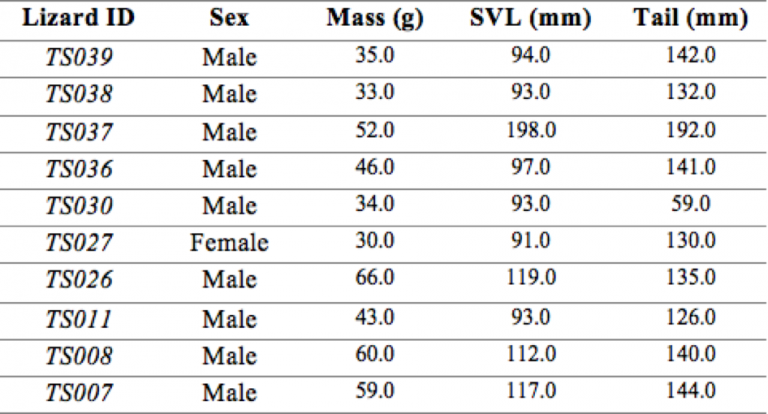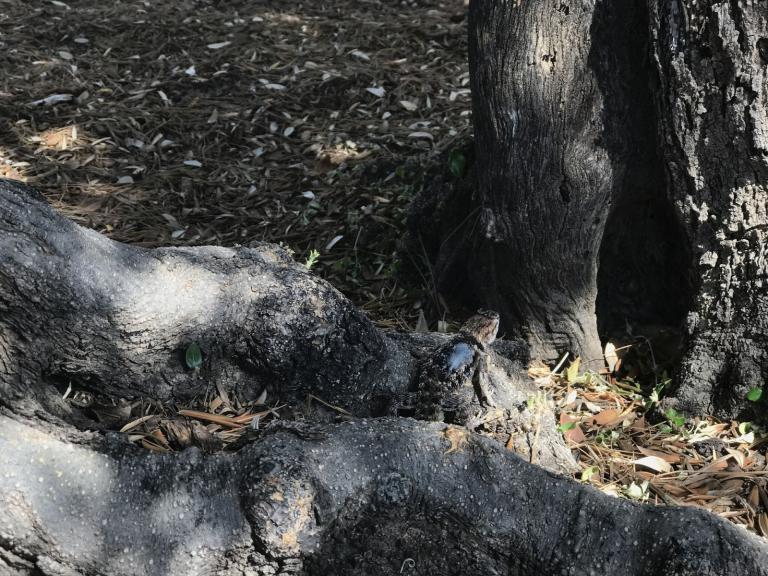In August 2017, undergraduates working on the Lizard Urban Ecology Project began using radio telemetry to track Desert Spiny Lizards (Sceloporus magister) on campus. The Desert Spiny Lizard is the largest of three lizard species that are commonly found on the University of Arizona campus. During the summer, spring, and fall these lizards can be seen basking on trees, rocks, or buildings on campus.
This summer, a team of six undergraduates surveyed several sites on campus in search of Desert Spiny Lizards and used nooses to catch them. Once caught, we took lizards into the lab, where we took body measurements, inserted a PIT-tag under the skin for identification, and attached a radio transmitter to its back using silicone. Within 24 hours, we returned each lizard to the exact location where it was captured. Then, we radio tracked lizards daily at three different times– morning, afternoon, and evening. Radio telemetry allows us to track lizards to their exact locations and estimate body temperatures. Each time we tracked a lizard, we collected temperature, weather, and microhabitat data. In addition, we watched each lizard for about 15 minutes to observe their behaviors.
We tracked a total of 10 lizards, 9 males and 1 female, from August to December 2017. We determined that lizards were far more visible and active during the warm, summer months, and less active during fall and winter. Our results show that lizards were most active when temperatures were between 29.6-33.5oC, and less active when temperatures were either too cold or too warm. These results are consistent with the fact that lizards rely on thermoregulation to regulate their body temperatures. When lizards were visible, we usually found them motionless on trees. On occasion, we observed lizards basking, displaying (push-ups and head bobs), and even preying on other lizards. One of the most exciting observations was when a large male, TS007, chased and ate a Sonoran Spotted Whiptail (Aspidoscelis sonorae). A few days later, we saw TS007 chasing other Desert Spiny Lizards and eating a grasshopper.

Measurements collected for 10 Desert Spiny Lizards that were tracked from August-December 2017.
Although the activity of the lizards has slowed down since late fall, we expect to see more of them as temperatures increase and winter comes to an end. We plan to catch more lizards and continue radio tracking them throughout the spring.


